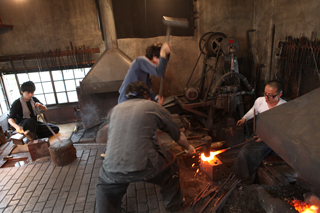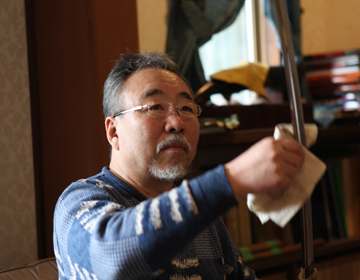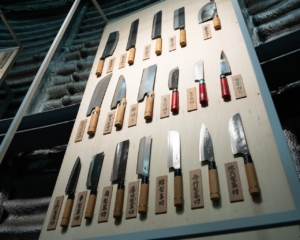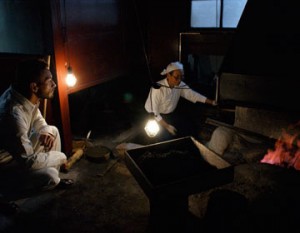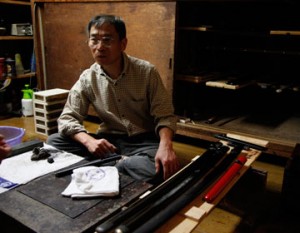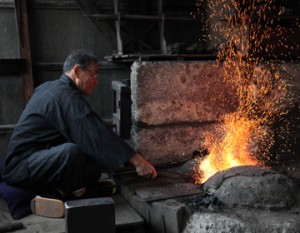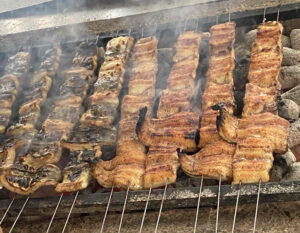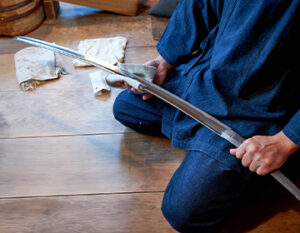Beauty living in “katana”
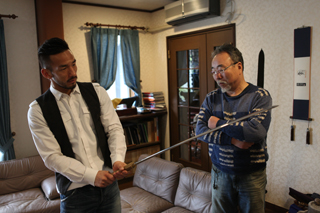
”Aren’t ”katana” beautiful?” These were the words of Yoshindo Yoshihara, the swordsmith that is undoubtedly at the forefront of the swordsmith industry. His ”katana” are accredited not just in Japan, but also globally, and are part of the collection at the Metropolitan Museum of Art and Boston Museum. One of the most beautiful features of ”katana” is the ”hamon”. There are a variety of ”hamon” including the straight ”suguha”, and each school and region has their own features.
Yoshihara specializes in ”choji midare”. The magnificence of the designs are depicted in large waves of different heights, which have a gorgeous beauty like flower petals. As the question ”Aren’t ”katana” beautiful?” implies, at first the majestic force takes our breath away, then we are drawn into the gracefulness.
”Katana” are Weapons that Support the soul
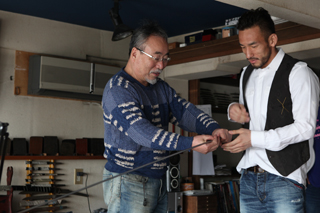
”Katana” are ”weapons” to attack people. However, Yoshihara claims that swords are ”weapons that protect the samurai spirit”, more than a weapon to take people’s lives. ”During the Sengoku era, guns were introduced from abroad, replacing swords as practical weapons during the war. Despite this, swordsmanship continued and developed, which were the same with ”kanatan”. During the Sengoku era, countless notable swords were made and valued. Although they had no use in the battlefields, people still wore them. Swords acted as moral support for the samurai.” To support this theory, Yoshihara told us the number of ”kanata” that are designated as National Treasure or as an Important Cultural Treasure. Of all National Treasures, swords outnumber all the rest.
He added, ”I think Japan is the only country that designate swords as National Treasures.” In Europe, there are sheaths that are designated as cultural assets, but most treasures are jewelry and decorations. In Japan, ”katana” are cultural assets and dedicated to shrines. This symbolizes that they are not just regarded as weapons, but serve as moral support.
Relaying to the next generation
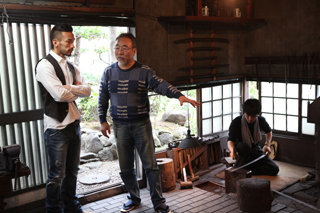
Currently there are approximately 300 swordsmiths in Japan. However, there are only about 50 swordsmiths that make a living in the profession. To become a swordsmith, you need a licence. You need to go into apprenticeship for 5 years and then take an exam conducted by the Ministry of Culture.
The next generation aims to continue the culture even if it means that they to face this challenge. Yoshihara welcomes young apprentices. There is no age or gender restriction, but ”I don’t think there are any females. Maybe there is an image that this world forbids women.” As Yoshihara pointed out, there are very few females who work in the industry.
In the workshop, an apprentice was hammering steel for the ”katana”. With a pair of bellows on the right and a furnace with coal to the left, the sword is heated and hammered repeatedly. It requires long periods of strength and concentration. ”I learned complex skills out of love for the profession,” says Yoshihara. Currently, he creates the blade as well as the sheath and guard of the ”katana”. The Japanese tradition that lives on in the ”katana” is succeeded by the master swordsmith who has a strong love for ”katana”.
